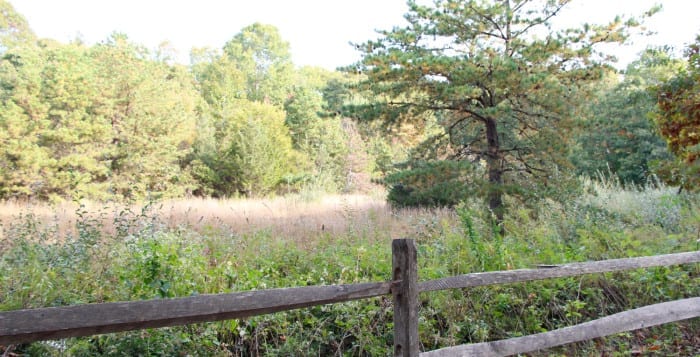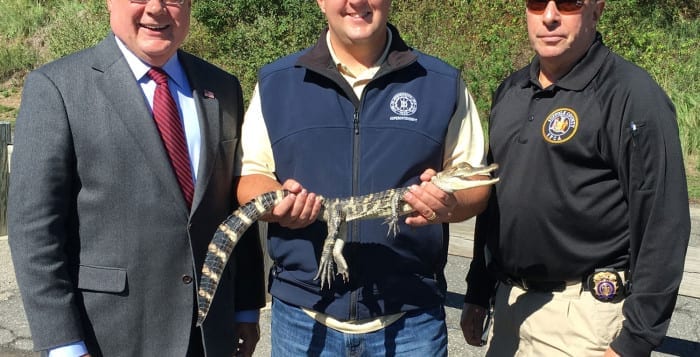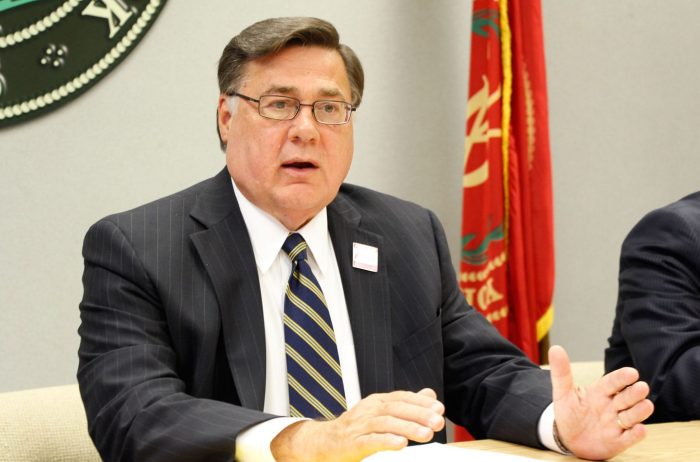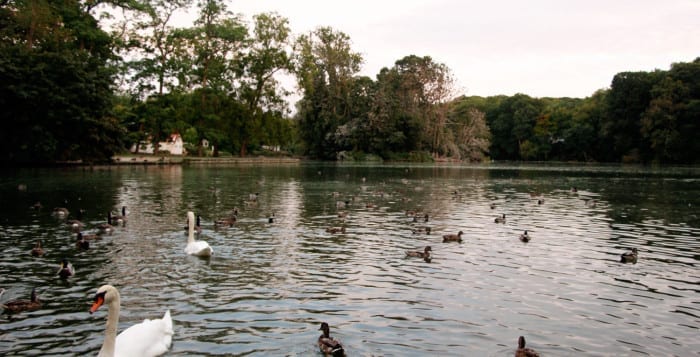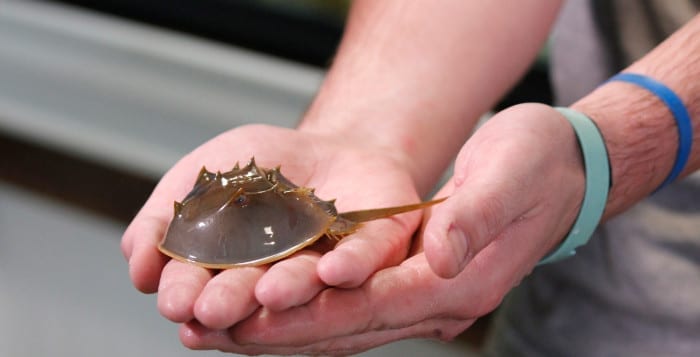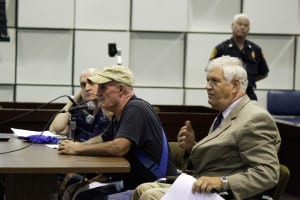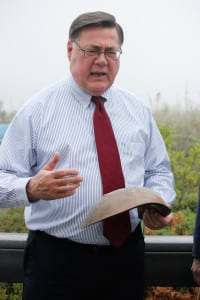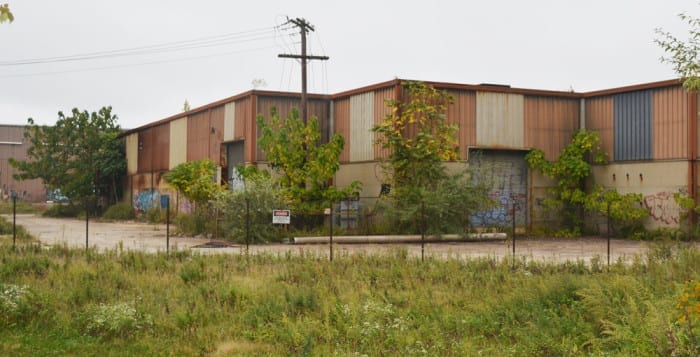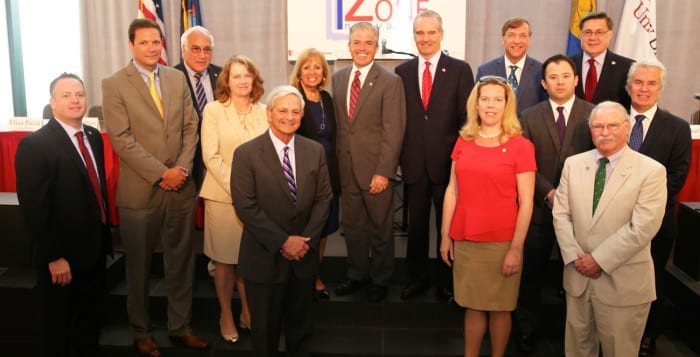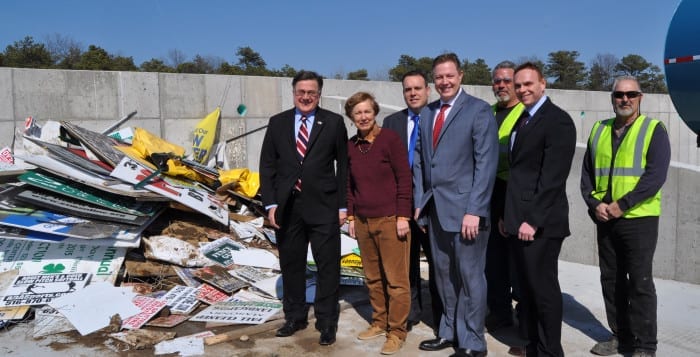After years of frustration, the Friends of Cordwood Landing have had enough.
On Thursday, Oct. 15, the group had a rally alongside residents, environmental activists and elected officials to fight for the preservation of a parcel of land next to the Cordwood Landing Nature Preserve, a county park in Miller Place. The rally was held to help the Friends of Cordwood find a different means of acquiring the land after the group hit a standstill with county legislators.
According to Tom Cramer, one of the founding members of Friends of Cordwood Landing, any resolution regarding the purchase of property must go through the county legislator — Legislator Sarah Anker (D-Mount Sinai). Cramer said getting in touch with Anker regarding this issue was difficult when he and the Friends of Cordwood attempted to get an appraisal for the property.
The interaction ended with the Friends of Cordwood turning to Legislator Kara Hahn (D-Setauket). Cramer said Hahn helped the group push the resolution through, and an appraisal was done for the property.
While Cramer said Anker didn’t follow up with the group’s initial resolution proposal, Anker said she did all that she could to assist the organization. The resolution was Anker’s first piece of legislation, according to an email from her office. Her office also said the county did an appraisal of the property. The county offered $783,000 to the original owner of the parcel and the owner refused the offer. In September of 2014, Mark Baisch, the developer, purchased the property for $750,000.
Cramer said Baisch asked for $1.25 million for the approximately 5.5-acre property, and they increased the appraisal to $930,000. After Baisch refused this offer, Cramer claims Anker said Baisch and the Friends of Cordwood were in collusion with one another and were attempting to defraud the county. Cramer said they were not.
Anker denied the idea that Baisch and the Friends of Cordwood were working together.
With the tension between those involved, Baisch refused to sell the property to the county and is currently in the process of going through the town to handle the matter. Supervisor Ed Romaine (R) and Councilwoman Jane Bonner (C-Rocky Point) attended the rally last Thursday. According to Cramer and Bonner, Romaine was promising to pay 30 to 35 percent of the property’s cost.
“In our mind, it’s illogical to build houses near a nature preserve,” Bonner said about Baisch’s plan to put houses on the property. She added that the wildlife in the area would be affected.
In a phone interview, Anker said her goal was to help preserve the property, as it is one of the last few tracks of land in the North Shore area that needs to be preserved. According to Cramer, many residents thought the property was part of the Cordwood Landing county park, which lies adjacent to the piece of property.
Now it’s simply a waiting game, as Baisch waits for his plan for the property to be approved by the town.
Bonner said the town is working on it.
“We are ready, willing and able partners … [the property] has always been on our radar,” Bonner said in a phone interview. “It will make a wonderful addition to the Cordwood Landing.”

